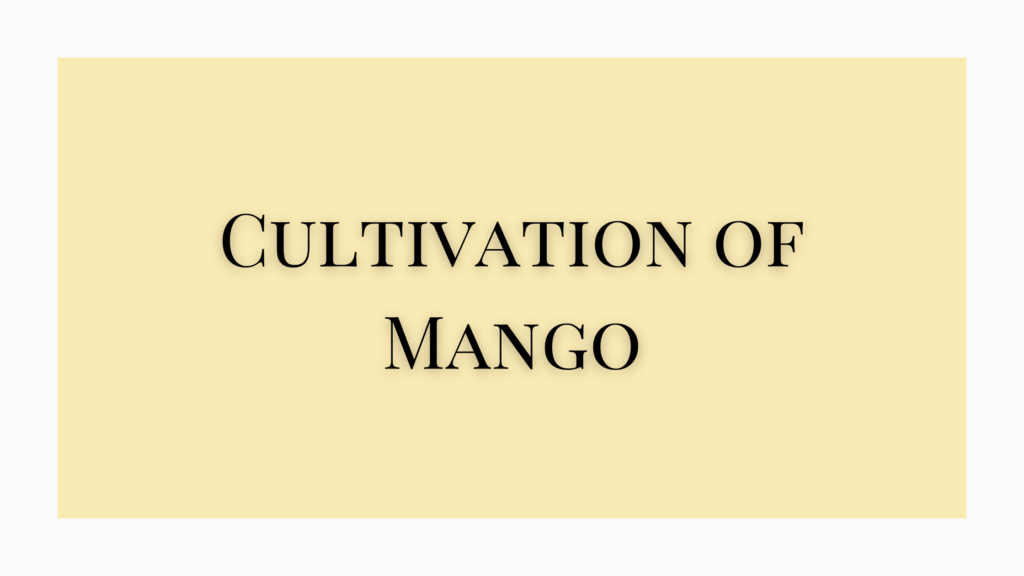The scientific name of mango is Mangifera indica. Mango belongs to the family Anacardiaceae. It is one of the oldest and most important tropical fruits. It is also considered a sacred tree in India.
Cultivation of Mango
It is indigenous to India, Sri Lanka, and Malaysia and was introduced to other countries. The tree is planted in almost all gardens in villages and cultivated in almost all orchards. The trees grow up to 15 m in height and are mainly cultivated from the seed. However, some selected varieties are propagated by grafting and budding.
Seeds are sown at the onset of monsoon and one-year-old seedlings are used as stock for grafting. Potted seedlings are carried to a scion tree and placed on an elevated position to meet the branches. The graft is ready in about two months and is then removed by cutting the scion branch below the grafted portion and the top of the stock. The graft is nursed for about 6 months or more before planting.
The fruit is a fleshy drupe with a thick yellowish skin and a large seed inside. The pulp is orange, red, or yellow and has a rich aromatic flavor when ripe.
Spacing of Mango Trees
Mango trees are planted on rows, 4-5m apart from each other and each row. They are planted in pits of 60 x 60 cm. After planting the pits are filled with 90% farmyard manure and 10% wood ash with a little bone meal. Manuring is done for young plants at the beginning of the monsoon.
Mango trees grow in various types of soil from clayey loam to poor sandy soil It cannot stand waterlogging. Loamy soil containing 5-10% lime and enough iron peroxide produces the best fruits.
Irrigation of Mango
Mango needs well-drained but moisture-retaining soil. Irrigation is necessary for the first 3-4 years in drier areas. Irrigation is done for 4-5 times before monsoon.
Pruning
By proper pruning, the tree can be kept less than half as large. Pruning means to cut a certain portion of a plant to improve its vigor and to stimulate the growth of fruit.
Fertilization
Mango trees require a well-balanced nutrient mix for their proper growth. It is essential to test the soil for nutrient levels and add nutrients and micronutrients as needed.
Yield
Mango flower throughout the winter season and fruits ripe in three months. Ripe fruits are available in the market from April to July. The low hills of Sikkim and Bengal are suitable for the production of late-ripening mangoes.
The Delhi market is supplied with mangoes first from the South and then from Bihar and UP from June to July. Fruits from grafted trees offer smaller mangoes having more pulp with less fiber.
Disease Control in Mango
To control white ants in mango trees, DDT water is sprayed on younger plants in October.




